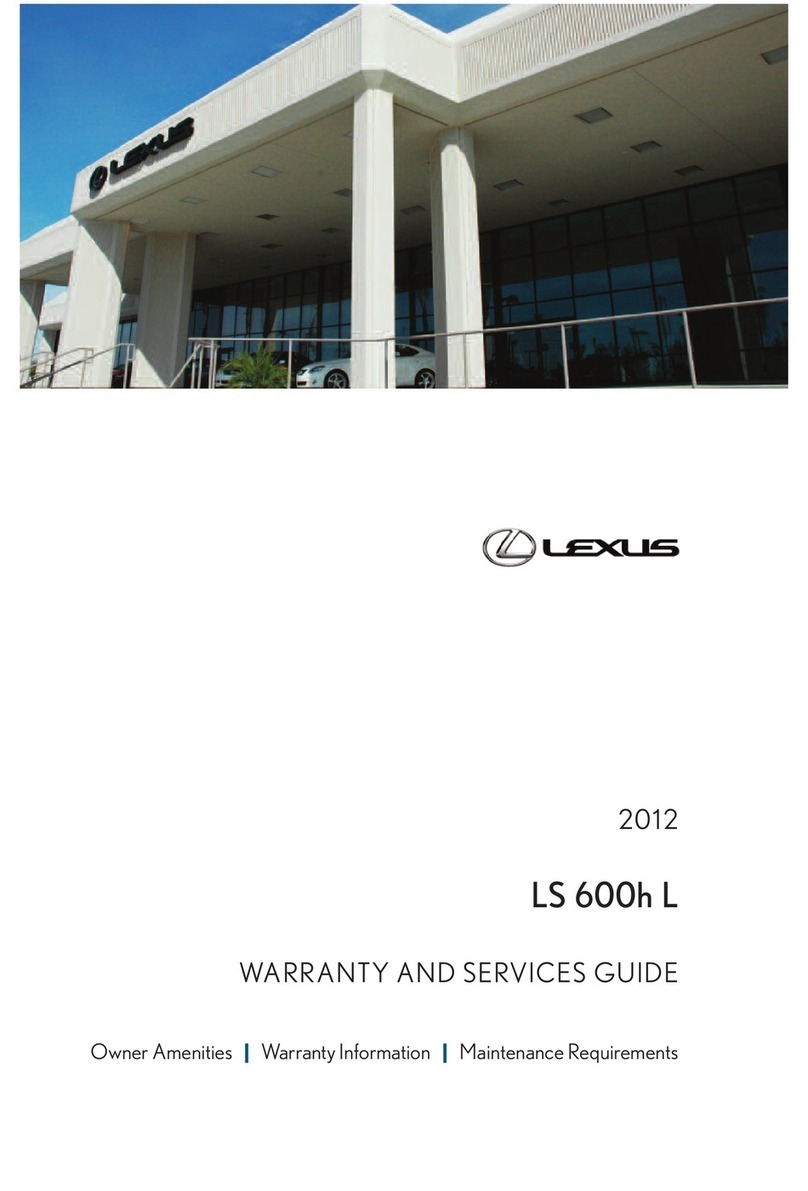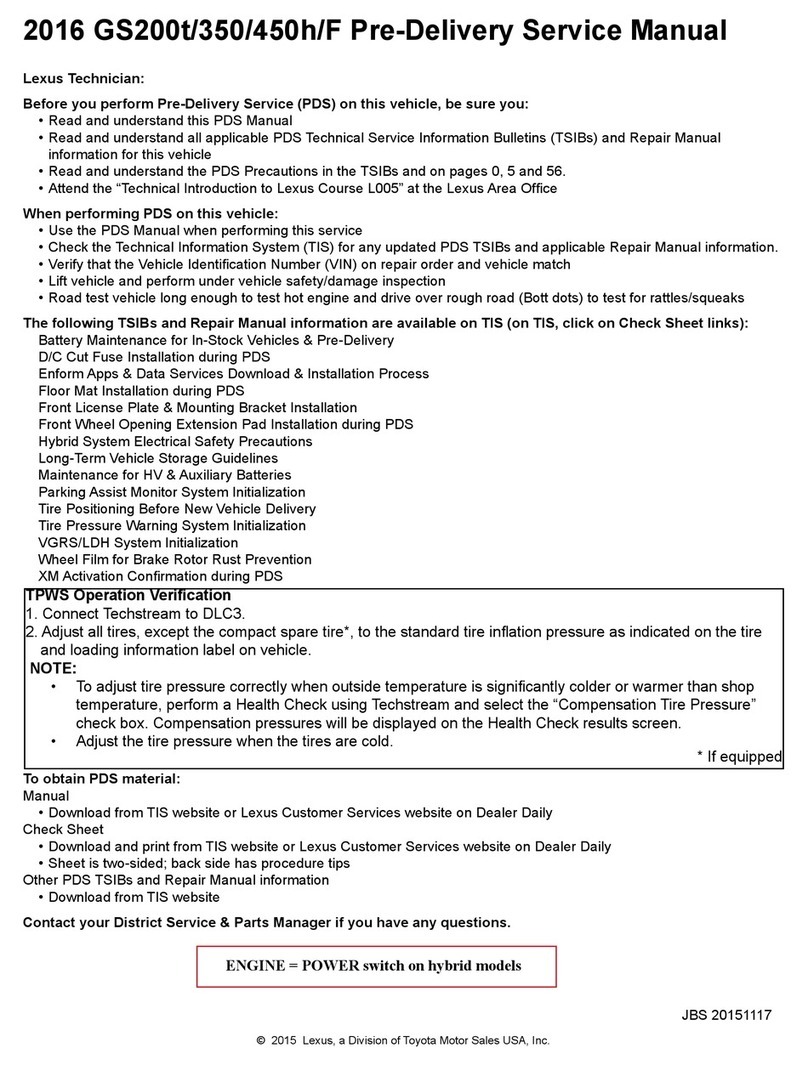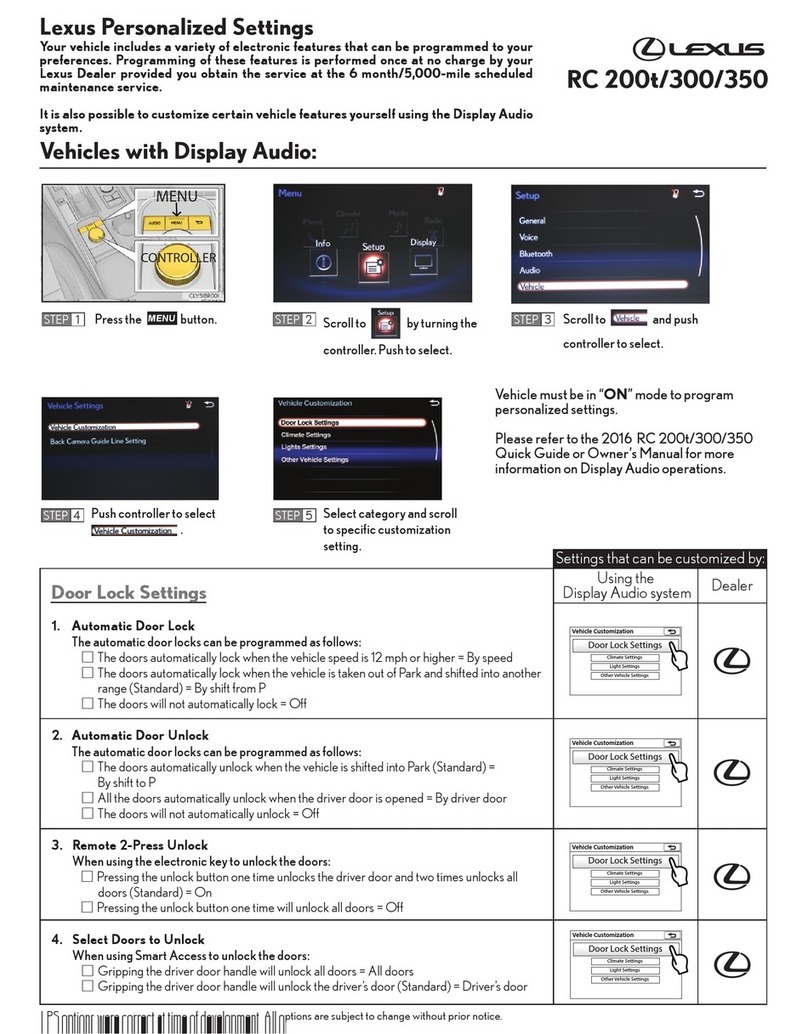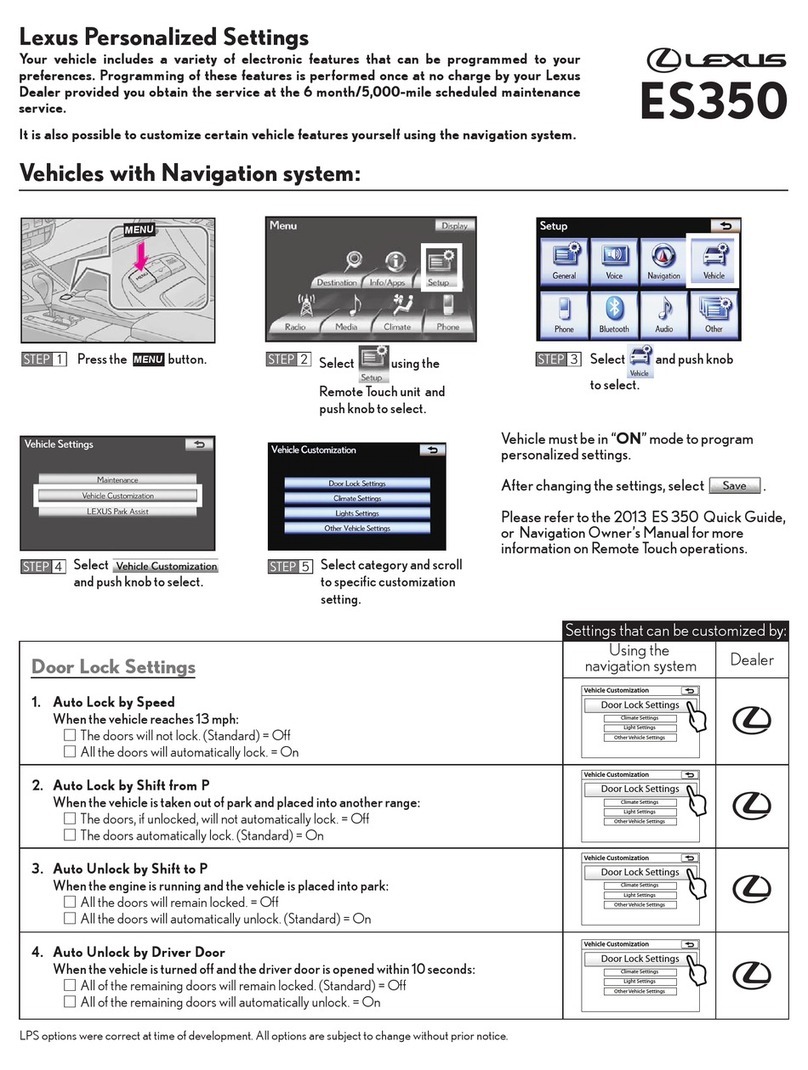
IN0KE-01
BO4111
Negative Cable
IN-10 -INTRODUCTION FOR ALL OF VEHICLES
10Author: Date:
2005LEXUS IS300 (RM1140U)
FOR ALL OF VEHICLES
PRECAUTION
1. FOR VEHICLES EQUIPPED WITH SRS AIRBAG AND
SEAT BELT PRETENSIONER
(a) The LEXUS IS300 is equipped with an Supplemental Re-
straint System (SRS), such as the driver airbag, front pas-
senger airbag assembly, side airbag assembly, curtain
shield airbag assembly and seat belt pretensioners.
Failure to carry out service operations in the correct se-
quence could cause the supplemental restraint system to
unexpectedly deploy during servicing, possibly leading to
a serious accident.
Further, if a mistake is made in servicing the supplemental
restraint system, it is possible the SRS may fail to operate
when required. Before servicing (including removal or
installation of parts, inspection or replacement), be sure
to read the following items carefully, then follow the cor-
rect procedure described in this manual.
(b) GENERAL NOTICE
(1) Malfunction symptoms of the SRS are difficult to
confirm, so the diagnostic trouble codes become
the most important source of information when trou-
bleshooting. When troubleshooting the supplemen-
tal restraint system, always check the diagnostic
trouble codes before disconnecting the battery (see
page DI-607 ).
(2) Work must be started after 90 seconds from the
time the ignition switch is turned to the LOCK posi-
tion and the negative (-) terminal cable is discon-
nected from the battery.
(The supplemental restraint system is equipped
with a back-up power source so that if work is
started within 90 seconds of disconnecting the neg-
ative (-) terminal cable from the battery, the SRS
may deploy.)
When the negative (-) terminal cable is discon-
nected from the battery, memory of the clock and
audio systems will be cancelled. So before starting
work, make a record of the contents memorized by
the each memory system. Then when work is fin-
ished, reset the clock and audio systems as before.
To avoid erasing the memory of each memory sys-
tem, never use a back-up power supply from anoth-
er battery.



















































